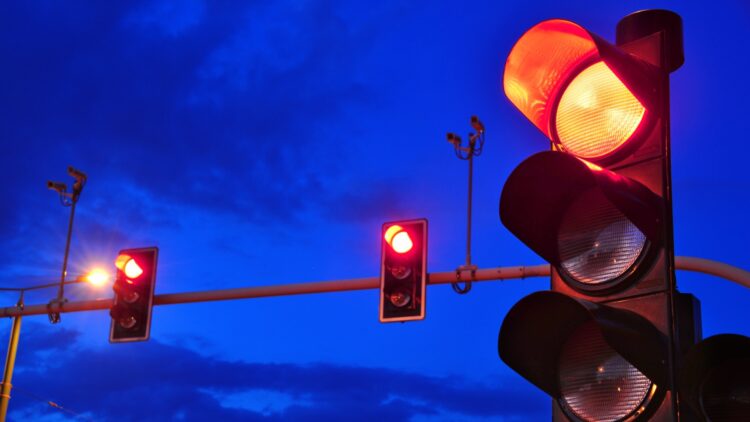Intersections in California have become a blind spot in traffic that has gone unnoticed for a long time. Despite being one of the most regulated points on our streets, they are also the most dangerous. Behind the rush to get home—or to work—and the frustration with the yellow light at traffic lights, lies a rather tragic statistic.
In 2013, serious injuries and deaths related to drivers running red lights increased by 96% statewide. In 2023 alone, these violations were directly linked to the loss of 195 lives and more than 1,200 serious injuries in California. One in five serious victims are pedestrians and cyclists, the most vulnerable users of public roads. In response to this crisis, the governor signed the Safer Streets Act (Senate Bill 720 / SB 720) in October 2025.
This new legislation introduces a new type of fine and completely modernizes the outdated camera system that has been in place since 1995.
The old—and obsolete— camera system
The 1995 law on traffic light cameras was excessively punitive. The irony is that it was ineffective. Fines were classified as criminal offenses, resulting in total costs—after fees and surcharges—that easily exceeded US$500. In addition to the financial cost, the penalty was added to the driver’s license, which inevitably affected their insurance premiums.
However, the biggest problem with the law was its enforcement requirement: it required the police to have a clear photograph of the driver’s face in order to prove the offense. Unable to identify the driver, thousands of fines were dismissed in court. If the license plate was blurred, there were reflections on the windshield, or the vehicle was a rental, nothing happened in the end after a long process. This administrative inefficiency ultimately made camera systems unviable for many cities. Some, such as Sacramento, chose to abandon their camera programs altogether because the operating and enforcement costs far exceeded the revenue collected.
SB 720: the new road safety law in California
This new law changes the approach by decriminalizing camera violations. The violation will become a civil offense (rather than a criminal offense), much like a parking ticket. However, this simple change brings financial relief. For starters, the fine for the first camera-captured violation is drastically reduced, capped at $100. The fine does not add points to the driver’s license and does not affect the driver’s insurance rates.
However, careless drivers will not get off scot-free: the law introduces a system of graduated fines for repeat offenders, with fines of up to $500. However, it is no longer necessary to see the driver’s face to find the guilty party; responsibility for the violation now falls on the registered owner of the vehicle. The evidence collected is now just a clear photo of the vehicle’s rear license plate, which not only facilitates law enforcement but also does not require invading the driver’s privacy by taking a photo of their face.
Reinvestment in the Community
All revenue generated by the new program, once initial operating costs are covered, will be invested directly in Safe Streets infrastructure. Money raised did not go into the city’s general fund, but instead directly financed the construction of bike lanes, installation of raised crosswalks, or the creation of other traffic calming measures. As mentioned above, the law was signed in October 2025, although it will come into effect on November 1, 2026.
From then on, every citizen who wishes to adopt the program must opt in, passing local ordinances and conducting a comprehensive public information campaign to notify the population of the change in traffic legislation. That is why there will be a mandatory 60-day warning period before it is actually implemented.
So now you know: next time a friend asks to borrow your car…ponder on whether they are a good driver… if they are not, you will be the one to pay for their running lights habit!

